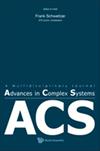不同节奏背景音乐下单纵队运动中的行人动力学
IF 1
4区 数学
Q4 MATHEMATICS, INTERDISCIPLINARY APPLICATIONS
引用次数: 2
摘要
庞大的人群正在挑战大城市的舒适和安全水平,而音乐可能是改善人流量的一种潜在方法。本文主要研究不同节奏和背景音乐类型对行人动态的影响。三种节奏(90[公式:见文]节拍/分(BPM), 120[公式:见文]BPM和150[公式:见文]BPM)和两种类型(纯音乐和节拍器刺激)的音乐。研究发现,更频繁的走走停停行为是有节奏的。与低节奏(90[公式:见文]BPM)的节奏条件相比,高节奏(120[公式:见文]BPM或150[公式:见文]BPM)的节奏条件下,停止频率更高。与无节拍器相比,使用90 BPM、120[公式:见文]BPM和150[公式:见文]BPM音乐、90[公式:见文]BPM、120[公式:见文]BPM和150[公式:见文]BPM节拍器时,单位时间内停车行人数量分别增加68.57%、376.00%、298.29%、224.00%、438.29%和393.71%。在有背景音乐的情况下,流速和流量较低,局部密度较高。具有节奏的高密度步进频率([公式:见文],[公式:见文]和[公式:见文][公式:见文][公式:见文]Hz为90[公式:见文]BPM, 120[公式:见文]BPM和150[公式:见文]BPM音乐;[公式:见文],[公式:见文]和[公式:见文][公式:见文][公式:见文][公式:见文][公式:见文][公式:见文][公式:见文][公式:见文][公式:见文][公式:见文][公式:见文]BPM节拍器的Hz为90[公式:见文]BPM, 120[公式:见文]BPM和150[公式:见文]BPM节拍器)低于没有任何节奏([公式:见文][公式:见文]Hz)。行人在背景音乐条件下需要更多的时间来避免碰撞和迈步,因为他们受到音乐的影响,没有完全集中精力走路。因此,步进频率降低,停止行为更加频繁。这反过来又导致速度和流量的减少和更高的局部密度的出现。本研究将有助于理解背景音乐对行人动态的影响。本文章由计算机程序翻译,如有差异,请以英文原文为准。
Pedestrian dynamics in single-File movement under Background Music with Different Tempos
Large crowds are challenging the comfort and safety level of big cities, while music may be a potential method to improve pedestrian flow. This paper focuses on the influence of different tempos and types of background music on pedestrian dynamics. Three tempos (90[Formula: see text]beats/min (BPM), 120[Formula: see text]BPM and 150[Formula: see text]BPM) and two types (pure music and metronome stimuli) of music are considered. It is found that more frequent stop-and-go behaviors emerge with rhythms. Compared with that under a low tempo (90[Formula: see text]BPM) of rhythm condition, stopping is more frequent with a high tempo one (120[Formula: see text]BPM or 150[Formula: see text]BPM). The number of stopping pedestrians per unit time increases 68.57%, 376.00%, 298.29%, 224.00%, 438.29% and 393.71% with 90 BPM, 120[Formula: see text]BPM and 150[Formula: see text]BPM music, 90[Formula: see text]BPM, 120[Formula: see text]BPM and 150[Formula: see text]BPM metronome, compared with that without any rhythm, respectively. The velocity and flow are lower, and higher local densities appear with background music. The step frequency at high density with rhythms ([Formula: see text], [Formula: see text] and [Formula: see text][Formula: see text]Hz for 90[Formula: see text]BPM, 120[Formula: see text]BPM and 150[Formula: see text]BPM music; [Formula: see text], [Formula: see text] and [Formula: see text][Formula: see text]Hz for 90[Formula: see text]BPM, 120[Formula: see text]BPM and 150[Formula: see text]BPM metronome) is lower than that without any rhythm ([Formula: see text][Formula: see text]Hz). Pedestrians need more time to avoid collisions and to step under background music conditions, because they are influenced by the music and not fully focusing on walking. As a result, step frequency decreases and stopping behavior is more frequent. This in turn leads to the decrease of the velocity and flow and the emergence of higher local densities. Our study will be helpful for understanding the effect of background music on pedestrian dynamics.
求助全文
通过发布文献求助,成功后即可免费获取论文全文。
去求助
来源期刊

Advances in Complex Systems
综合性期刊-数学跨学科应用
CiteScore
1.40
自引率
0.00%
发文量
121
审稿时长
6-12 weeks
期刊介绍:
Advances in Complex Systems aims to provide a unique medium of communication for multidisciplinary approaches, either empirical or theoretical, to the study of complex systems. The latter are seen as systems comprised of multiple interacting components, or agents. Nonlinear feedback processes, stochastic influences, specific conditions for the supply of energy, matter, or information may lead to the emergence of new system qualities on the macroscopic scale that cannot be reduced to the dynamics of the agents. Quantitative approaches to the dynamics of complex systems have to consider a broad range of concepts, from analytical tools, statistical methods and computer simulations to distributed problem solving, learning and adaptation. This is an interdisciplinary enterprise.
 求助内容:
求助内容: 应助结果提醒方式:
应助结果提醒方式:


